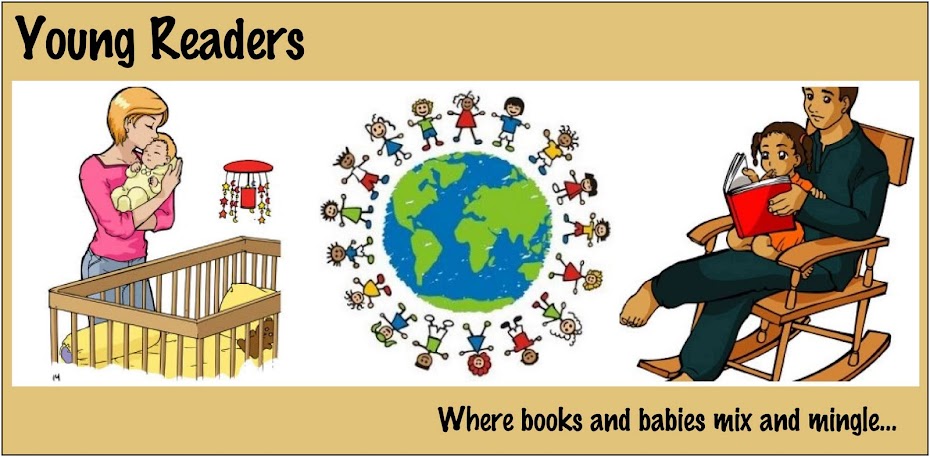
Holub, Joan. 2008. Knuckle Heads. Illustrations by Michael Slack.
Odd and quirky. Knuckle Heads is odd and quirky. The book is an adaptation of several fairy tales (or folk tales): Hansel and Gretel becomes Handsel & Gretel; Cinderella becomes Handerella; Thumbelina's still Thumbelina; Snow White is Nose White. This book revolves around the funny--or should that be
punny--illustrations. The problem is...are the illustrations good enough--funny enough--to carry it off? That's something that is very subjective. That could vary from reader to reader, from kid to kid, teacher to teacher, etc.
The humor is a bit over-the-top obviously pun-filled. The concept is what if these story characters had heads that were body parts--hands for heads, feet for heads, noses for heads, etc. It then throws a hundred-and-one puns at you that will either make you giggle or groan.
For example, in one two page spread we've got:
"Meanwhile, the stepsisters were having a ball. But things turned to toe jam when Handerella showed up. Soon the stepsisters were feeling like two left feet."
"This is one toe-tapping sock hop. Love that sole music!"
"Yeah, and that Prints is no heel. He's totally cute-icle!"
"My tootsies hurt. Someone call me a toe truck so I can go home."
"Why is the Finger Prints ignoring me? Did I forget my odor-eaters or something?"
It's got a few cute moments here and there. I like it, for example, when Handerella and Finger Prints were dancing. The text reads, "Handerella and the Finger Prints danced hand in hand. They spoke the same language. All the signs were there. It was true love." The illustrations show hands (hands-as-people) spelling out the word love in sign language. And I admit that it was a bit funny to see two characters thumb wrestle. But....
Generally speaking, I didn't end up liking this one. It was just too un-funny. Too many puns. Maybe I've just outgrown that stage of humor in my life. Maybe the six year old me would have loved it.
© Becky Laney of Young Readers









